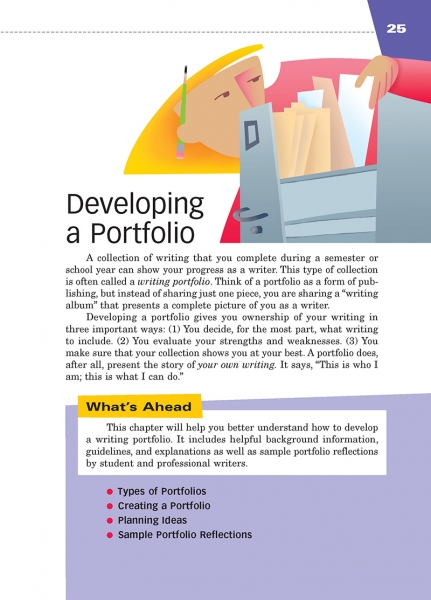Page 025 from

Start-Up Activity
Ask students how they save their favorite pictures, videos, and articles online. (For example, on Pinterest, they "pin" them in albums.) If any of them have examples of pages they have compiled with their favorites, have them share with the class. Ask those who share why they selected what they selected, and why they put these items together into a collection.
Tell them they will be doing the same with their writing this grading period. They will create portfolios that bring their most interesting pieces together into a collection that tells about them as writers. If they wish, they can even create their portfolios digitally!
Think About It
“The greatest power that a person possesses is the power to choose.”
—J. Martin Kohe